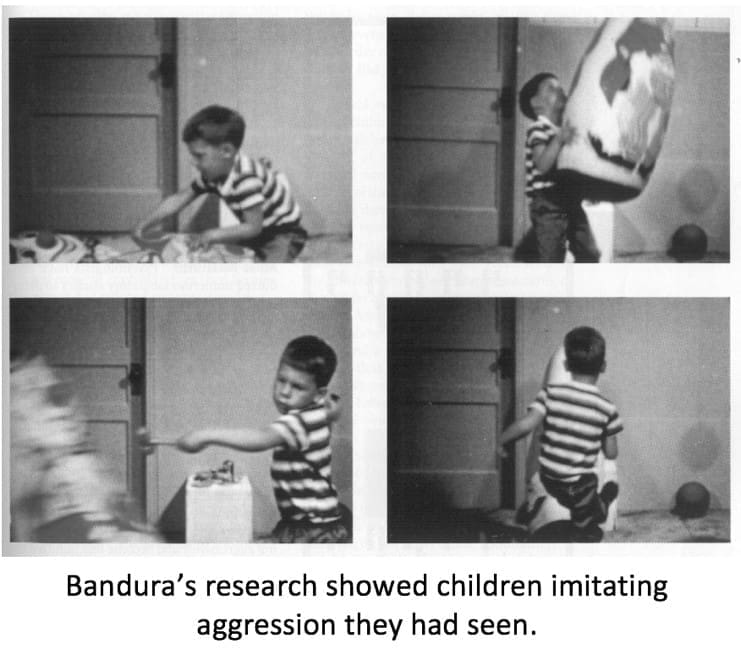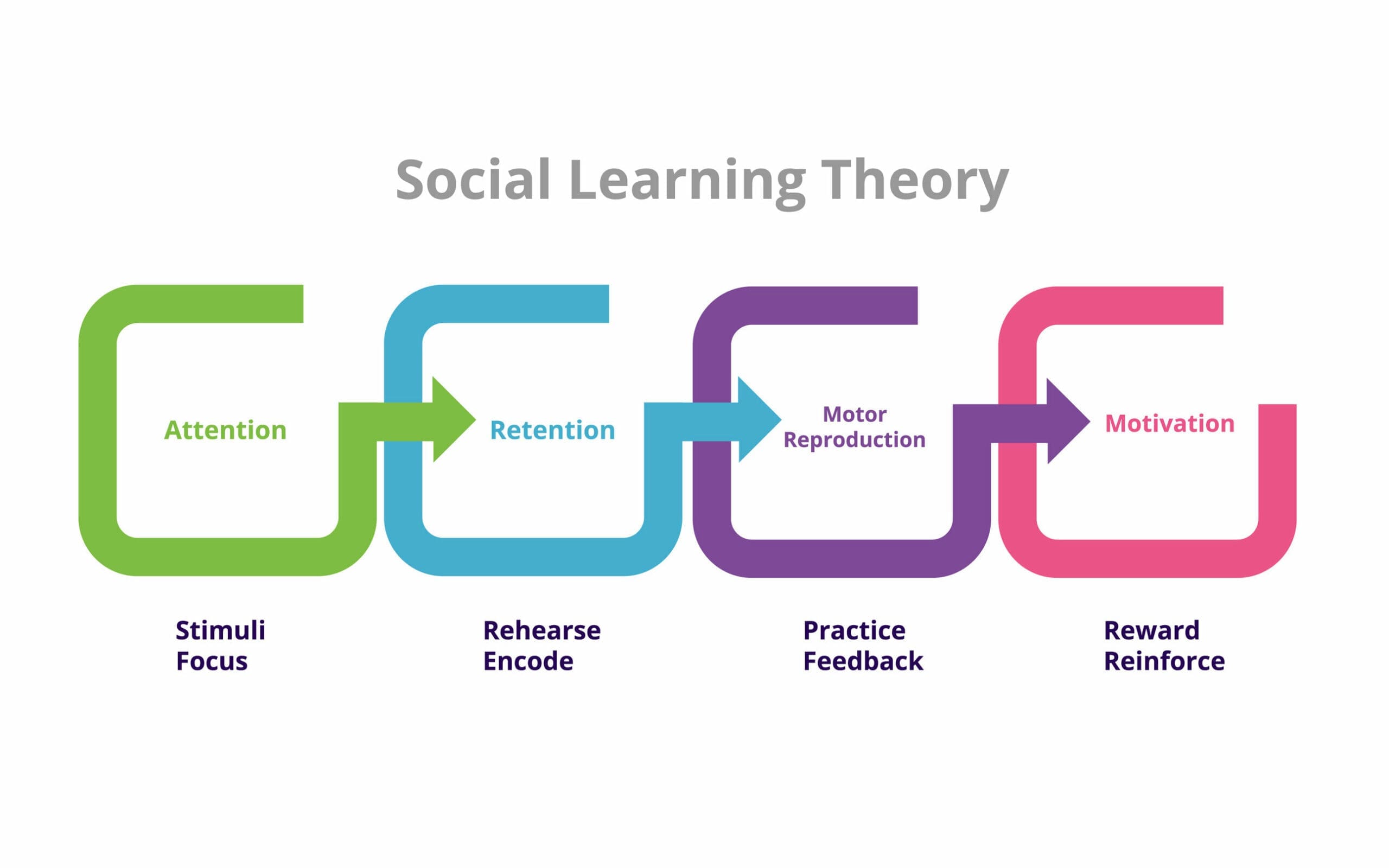In this post
This study, carried out by Bandura and his colleagues, is an example of how social learning theory is researched. The study, also known as the ‘Bobo Doll’ study, has been extremely influential since it was carried out in the 1960s.
Social learning theory is based on the idea that people will learn from watching role models. It is argued, especially with regards to children, that the behaviour of a role model will be repeated if that behaviour is not seen to be punished. Behaviour is thought to be even more likely to be repeated if children identify with the role models that they are observing.
Let’s now consider the research of Bandura in more detail. You are likely to be asked about this or the following research study in the appropriate section in the exam, so it is important that you know how the experiment was carried out, as well as its relative strengths and weaknesses.
Aim
Bandura, Ross and Ross aimed to find out if aggressive behaviours could be acquired by observation and imitation.
Method
Thirty-six boys and 36 girls aged between three and five years took part in the experiment. In each of the three groups, half of the participants were boys and half were girls.
Twenty-four of the children were exposed to role models, who interacted with the life-size inflatable Bobo doll clown in an aggressive way. These children witnessed adults kicking the doll, hitting it on the head and shouting at it.
After this, the experimenter deliberately irritated and frustrated the children who had observed the aggressive behaviour by not allowing them to play with new toys that they had seen. Instead they were taken into a room with other older toys, which included the Bobo doll.
Another 24 of the children witnessed adults interacting in a non-aggressive way with the Bobo doll, they saw the adults simply ignore the Bobo doll and play with other toys instead.
The final 24 children acted as the control group and were not exposed to the Bobo doll at all.
Results
- Children who witnessed aggressive adult behaviour were far more likely to imitate this kind of behaviour than in the other two groups

- Children who witnessed non-aggressive behaviour and those who were in the control group showed almost no aggression at all towards the Bobo doll
- Boys imitated more physically aggressive acts than girls, although both sexes were equally likely to use verbal aggression.
Conclusion
The findings support the social learning theory because the results show that children who observed aggressive role models were far more likely to imitate this behaviour than those who did not.
Strengths of the study
- The findings from the study have been very influential in finding out whether media violence has an impact on children’s behaviour
- The experiment took place in a laboratory, therefore all variables were well controlled
- The experiment has proven easy to replicate and has been carried out many times, with similar results since the 1960s.
Weaknesses of the study
- Children may have shown demand characteristics, which means that they displayed the behaviour that they thought the researcher was looking for
- The study lacks ecological validity, as it took part in a laboratory
- The research only looks at short-term behaviour and may not reflect children’s behaviour in the long term
- The study took place with an imitation doll; aggression may have been different with a real person who would likely have retaliated.




